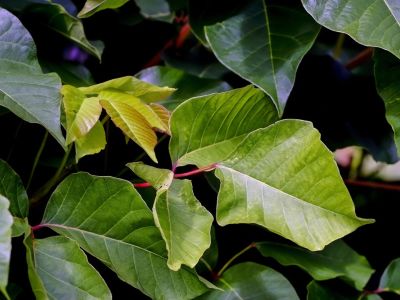Poison Sumac Information
Poison sumac (Toxicodendron vernix) is a large shrub or small tree that reaches mature heights of up to 20 feet (6 m.), but usually tops out at 5 or 6 feet (1.5-2 m.). The stems are red and the leaves are arranged in 7 to 13 pairs of glossy green leaflets, often with pale green undersides. Poison sumac trees grow in wet, swampy, or boggy areas or along shorelines. The plant is most common in the Great Lakes and coastal plains, but it is sometimes found as far west as Texas.
How to Get Rid of Poison Sumac
Although you can manage poison sumac any time of year, poison sumac control is most effective when the plant is in bloom in late spring through midsummer. Herbicides containing glyphosate are an effective means of control. Use the product strictly according to the directions on the label, and keep in mind that glyphosate is non-selective and will kill any plant it touches. Alternatively, you can cut the plants to a height of about 6 inches (15 cm.), then apply the weed killer to the cut stems. Use pruning shears, not a weed trimmer or mower, to avoid releasing irritating plant parts into the air. Note: Chemical control should only be used as a last resort, as organic approaches are safer and much more environmentally friendly.
Natural Poison Sumac Control
Natural poison sumac control is difficult but not impossible. You may be able control poison sumac by pulling or digging the plant, but be sure to get the entire root system or the plant will re-sprout. You can also cut the plant to ground level with pruning shears, but you’ll need to repeat the task every two weeks or so to keep up with new growth. If you are persistent the plant will eventually die, but it may take a couple of years. Dispose of plant parts in plastic bags. Of course, be sure to dress appropriately – wear gloves, long sturdy pants, and long-sleeved shirts. A Note of Caution: Avoid burning poison sumac trees because heating the plant releases vapors that can cause serious allergic reactions. When inhaled, the vapors can even be fatal. Any recommendations pertaining to the use of chemicals are for informational purposes only. Specific brand names or commercial products or services do not imply endorsement. Chemical control should only be used as a last resort, as organic approaches are safer and more environmentally friendly
